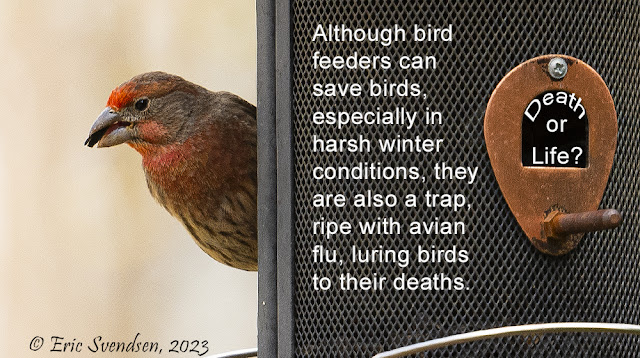Feeding birds and avian Influenza
 |
| House finch on feeder with sunflower seeds. Edmonton, May, 2022. |
As an avid birder, I take great pleasure in attracting birds to my backyard to enjoy and photograph. As many of us "birdos" know only too well, there are problems with the entire process. Apart from the cost, mess, and effort required to keep the operation going, there is a risk to the birds. First of all, it attracts predators. Cats, raccoons, skunks, hawks, and the like line up at the birdie buffet. The greatest threat, however, comes in the very smallest form.
"Although there has been widespread transmission of avian flu to wild bird species including waterfowl and raptors, transmission to songbirds and other typical feeder visitors has been low (less than 2% of all cases reported in wild birds). That means there is currently low risk of an outbreak among wild songbirds."
There is mild concern regarding the transmission of the virus to songbird populations, which is the group targeted in most birdfeeders. My personal thought is that the risk to such birds is low, but feeders should not be put out in areas where domestic fowl are raised as they are far more susceptible to the illness. For the average homeowner with a passion for everything with feathers, I think it is a low-risk proposition.
If you do decide to keep feeders, baths, water, and nesting areas available for birds, the best thing you can do is to keep them clean. Washing plastics and metals with hot water and a bit of bleach will keep these items clean. After they are cleaned and dried you can fill them with the seed or suet of your choice. The extra effort significantly reduces the chance of your feeding station becoming a disease depot.
The aforementioned website contains a lot of good information and links to other resources. Act out of knowledge, not fear.
Thanks for reading.
Eric Svendsen. www.ericspix.com




Comments
Post a Comment